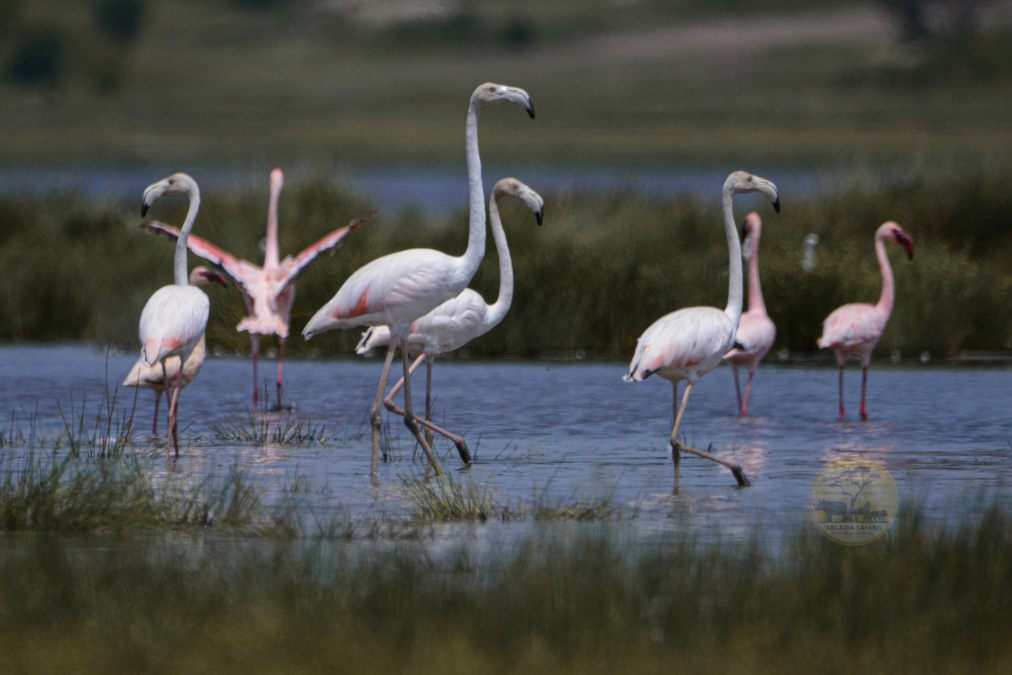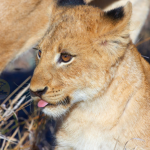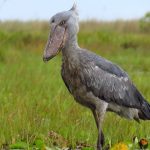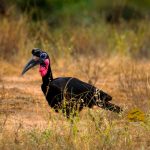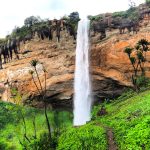Flamingos in Uganda: The Pink Marvel of Nature.
Flamingos in Uganda; These are probably some of the most recognizable birds in the world, even though their fame stems primarily from their pink feathers, long legs, and gracile movements. These social birds take a wading walk in shallow waters in large colonies, feasting on small organisms that give their feathers that defining color. While people know them from famous hotspots like Lake Nakuru in Kenya and Lake Natron in Tanzania, Uganda also offers its own Flamingo spectacles in specific spots, hence placing it among the top countries most birding enthusiasts will travel to.
What are Flamingos?
Flamingos are large wading birds of the family Phoenicopteridae. Pink or reddish coloration is provided through carotenoid pigments present in their diet of algae, brine shrimp, and small crustaceans. Six species occur worldwide, while two species are most common in Uganda: Lesser Flamingo and Greater Flamingo.
Flamingos are filter feeders; they sift through water, catching tiny organisms with their uniquely adapted beaks. They are also highly social, living in large colonies, sometimes numbering into the thousands, that help them protect themselves from predators and find food more efficiently.
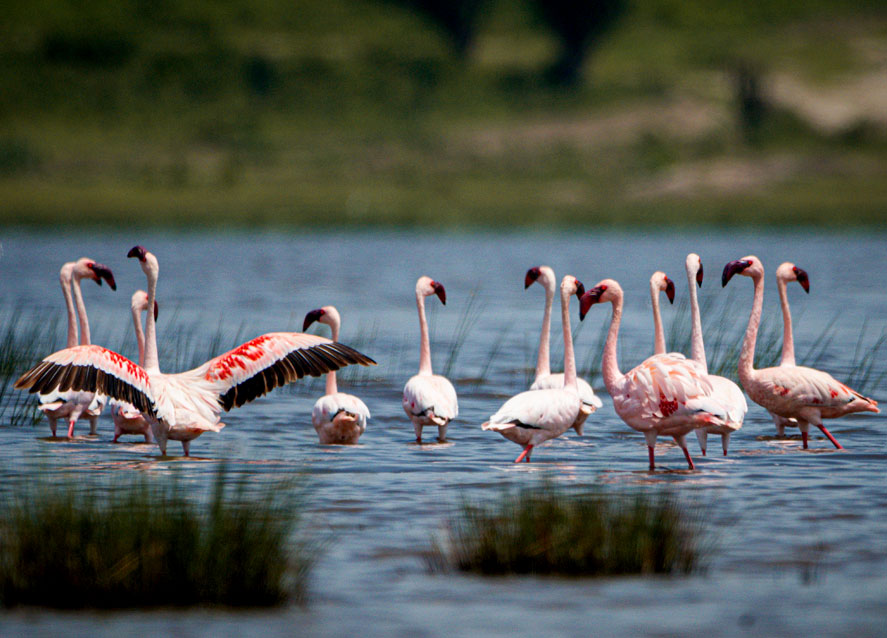
Flamingo Hotspots in Uganda.
Although Uganda is better known for its primates and big game, it hosts flamingos, particularly around its saline and alkaline lakes. Seasonal residents, these birds offer some of the most spectacular sights in the country’s Rift Valley lakes.
Lake Munyanyange: Sited on the northeastern fringes of Queen Elizabeth National Park, Lake Munyanyange is a prime spot for seeing flamingos in Uganda. The lake attracts flocks of Lesser Flamingos during the dry season, thanks to its rich supply of algae. Their pink bodies against the blue shimmering waters are a sight to behold. A real sight of enjoyment for birdwatchers is when these birds glide through shallow waters in search of food with their beaks.
For generations, the saltpans of Lake Katwe have lured flamingos to its saline waters. Lesser and occasionally Greater Flamingos congregate here, feeding on the abundant algae and small invertebrates. Surrounding craters and rugged landscape make for one of the most striking settings to encounter these beautiful birds.
Other alkaline lakes in the Rift Valley: The many minor and lesser-known lakes that lie within Uganda’s part of the Western Rift Valley also support flamingos for part of the year; Though not in the numbers one might hope for, the quiet beauty of these out-of-the-way places does afford proximity to birds not duplicated elsewhere in the country.
Types of Flamingos in Uganda.
There are two species of flamingos found in Uganda out of the six species found worldwide:
Lesser Flamingo – Phoeniconaias minor: This is the smaller of the two species and the brighter coloured, deeper pink, more frequently found in Uganda; These birds are essentially algae feeders with an intense pink colouration largely because of exceptional concentration of pigments in their algal food.
Greater Flamingo (Phoenicopterus roseus): Larger, with paler pink feathers, Greater Flamingos are less common in Uganda. They are seen to feed on a larger range of invertebrates as well as plants. Their stately presence is not abounding but adds much charm when flamingos are sighted in the country.

Behavior and Habitat of Flamingos in Uganda.
Flamingos are highly social and can prosper in big flocks. Saline or alkaline lakes are their preferred habitat, as these can provide their main diet of algae and small organisms. Their feeding is unique: while stirring the mud with their webbed feet, they hold their specially adapted beaks upside down in the water to filter food.
These birds are migratory birds in Uganda, normally migrating between countries of East Africa like Kenya, Tanzania, and Uganda in search of conducive feeding grounds. It usually visits in the dry season when the waters regress to concentrate the food sources they depend on.
Conservation Efforts.
Flamingos in Uganda are no exception to these threats, as they face habitat loss, pollution, and climate change. Alkaline lakes, relied on by flamingos, are sensitive ecosystems susceptible to even slight alterations of their water level and quality. Wetlands and lakes in Queen Elizabeth National Park are some of the key areas for flamingo conservation, among other wildlife in Uganda. These are part of wider commitments within Uganda concerning wetland protection and the development of eco-tourism.
Fortunately, this is in respect of Uganda’s conservation programs on wetland ecosystems and protection for bird species that help to retain the habitats that keep these beautiful birds alive. Through responsible tourism and continued protection, Uganda aims to preserve flamingo populations for future generations of bird-watchers and nature lovers.
Best Time to See Flamingos in Uganda.
The best months to see flamingos in Uganda are in the dry season: June to September and December to February. During these months, water levels for Uganda’s alkaline lakes go down, exposing more feeding areas for flamingos. This is when large flocks can be seen feeding in the shallow waters, offering spectacular birdwatching opportunities.
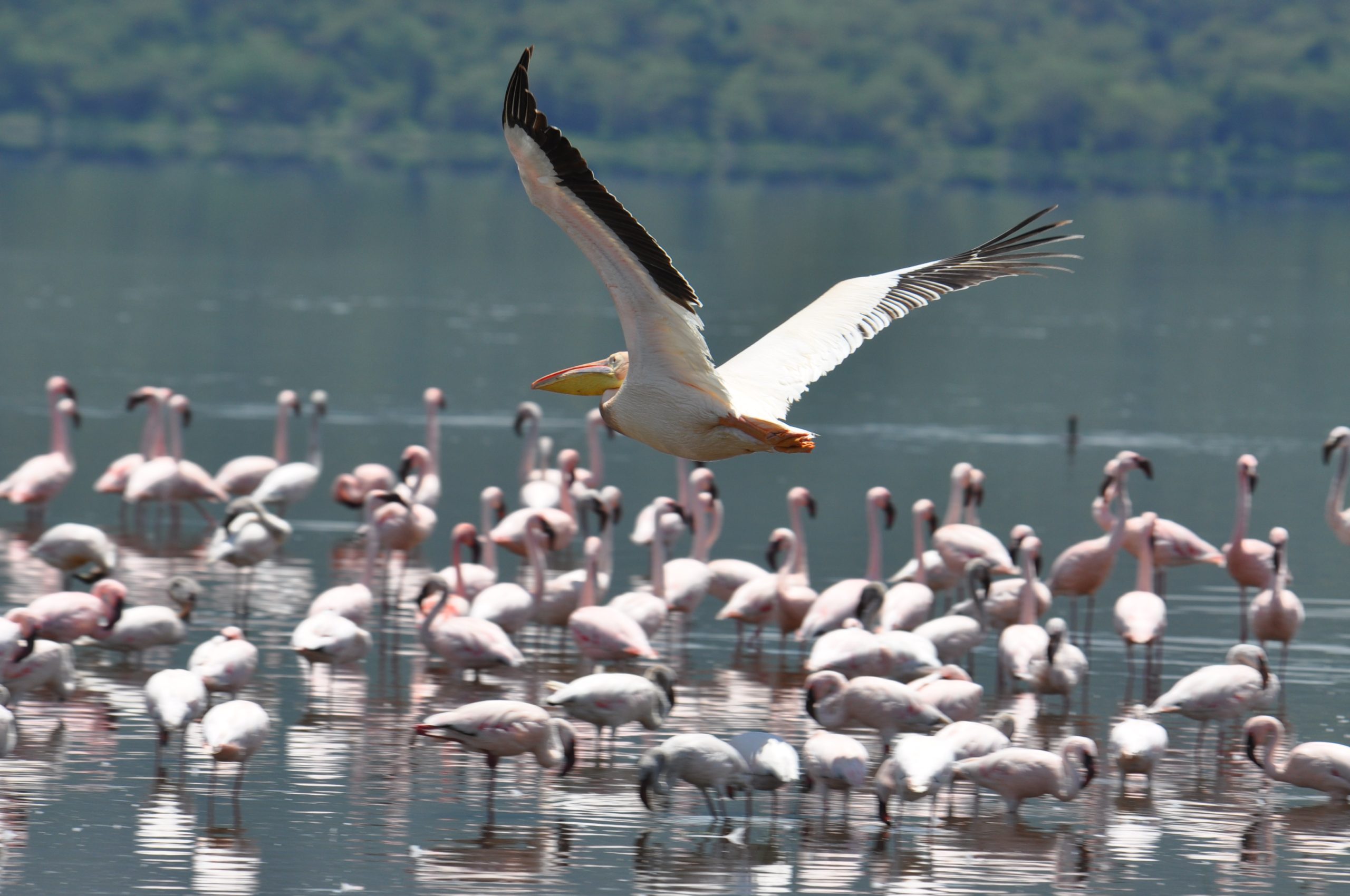
Flamingos and Ecotourism in Uganda.
Flamingo watching is increasingly cementing Uganda as an eco-tourism destination. Although Uganda provides wildlife safaris and primate treks, its bird-watching safaris are becoming one of the most popular tourism activities. With over 1,000 bird species, including flamingos, Uganda presents itself as a bird watcher’s haven.
Flamingo viewing trips combine with game drives, boat safaris along the Kazinga Channel, and Chimpanzee tracking in the Kyambura Gorge for complete wildlife adventure in Queen Elizabeth National Park. Flamingo sightings are a quiet contrast to the larger game, including elephants, lions, and buffaloes.
Conclusion on Flamingos in Uganda.
While Uganda may not be as famous as some other East African nations for flamingo watching, it offers some truly special opportunities to see these magnificent birds in their natural habitats. The pink flamingos in Lake Munyanyange and Lake Katwe stand witness to the diverse wildlife and scenic beauty of Uganda.
One of the most calming yet breathtaking experiences for birdwatchers and nature lovers includes flamingos, found in Uganda. From pink feathers to their gracious movements, flamingos are an essential view for any traveler who visits Uganda. Travel companies like Arcadia Safaris specialize in planning safaris and will easily help arrange and add flamingo viewing to your Ugandan journey for a well-rounded and memorable trip deep into Africa’s bush country.


